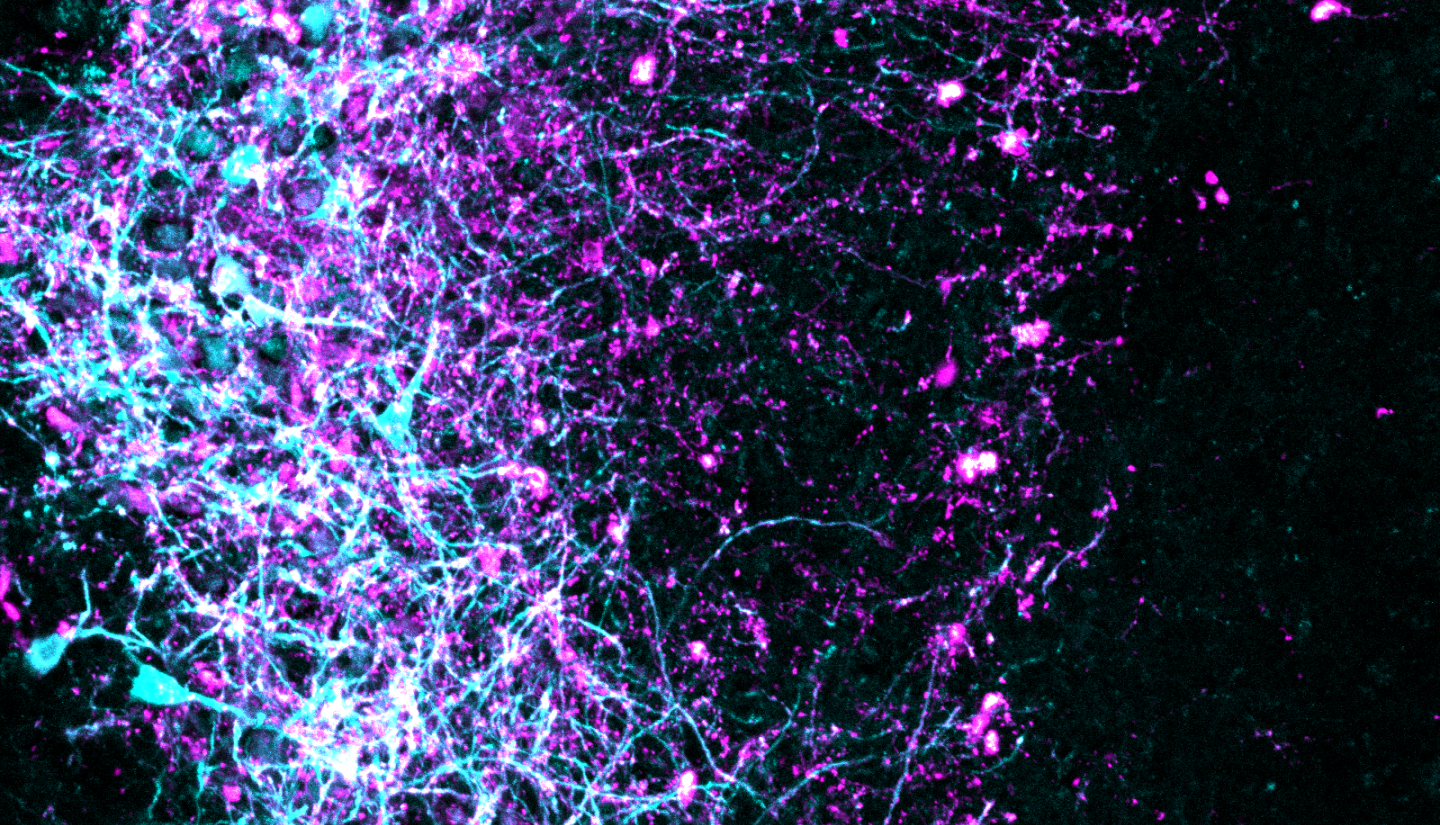Table of ContentsClose
Closer: Opening delta
The lab of Stephanie Gantz, PhD, aims to identify the chemical that gates delta glutamate receptor channels in the context of brain health, circuitry, and behavior.

The most famous of the glutamate-sensing receptors are the NMDA, AMPA, and Kainate receptors, which are involved in every vital process of the nervous system—from moving and breathing to learning and having emotions
But there is a fourth, and often overlooked, member of this family: the delta glutamate (GluD) receptor. Despite being classified as a glutamate receptor, these receptors are not gated by glutamate, and there are no known chemicals that gate their channel. Without an ability to open the channels, some have argued that channel function of GluD was lost in the evolutionary process. The belief that these channels do not open has become deeply entrenched.
Recently, research in the lab of Stephanie Gantz, PhD, assistant professor in the Department of Molecular Physiology and Biophysics (pictured above), made a breakthrough using mouse brain slices. The group discovered that GluD channels are affected by the “fight-or-flight” chemical noradrenaline. But it appeared that the GluD channels were already partially open, and noradrenaline simply modulated the already-open channels. This raised the question: What was allowing GluD to be open?
The overall goal of the Gantz lab’s future research is to identify the chemical that gates GluD channels. It may be that there is a chemical already present in brain slices that gates GluD, as was discovered for NMDA receptors in the late 1980s. Apart from direct gating, NMDA receptors also have at least six unique sites for chemical interactions that modulate channel opening. Thus, there are a vast number of chemicals present in the inside and outside of the cell that could be acting on GluD, either by directly gating or modulating gating. It is expected that each of these chemicals will have its own relevance to human health, like noradrenaline. Once identified, they can be expanded upon in the context of brain health, circuitry, and behavior.

The Gantz Lab
The Gantz Lab's mission is to identify membrane ion channels affected by G protein-coupled receptor activation, determine the mechanism of interaction, and the effect on excitability.
